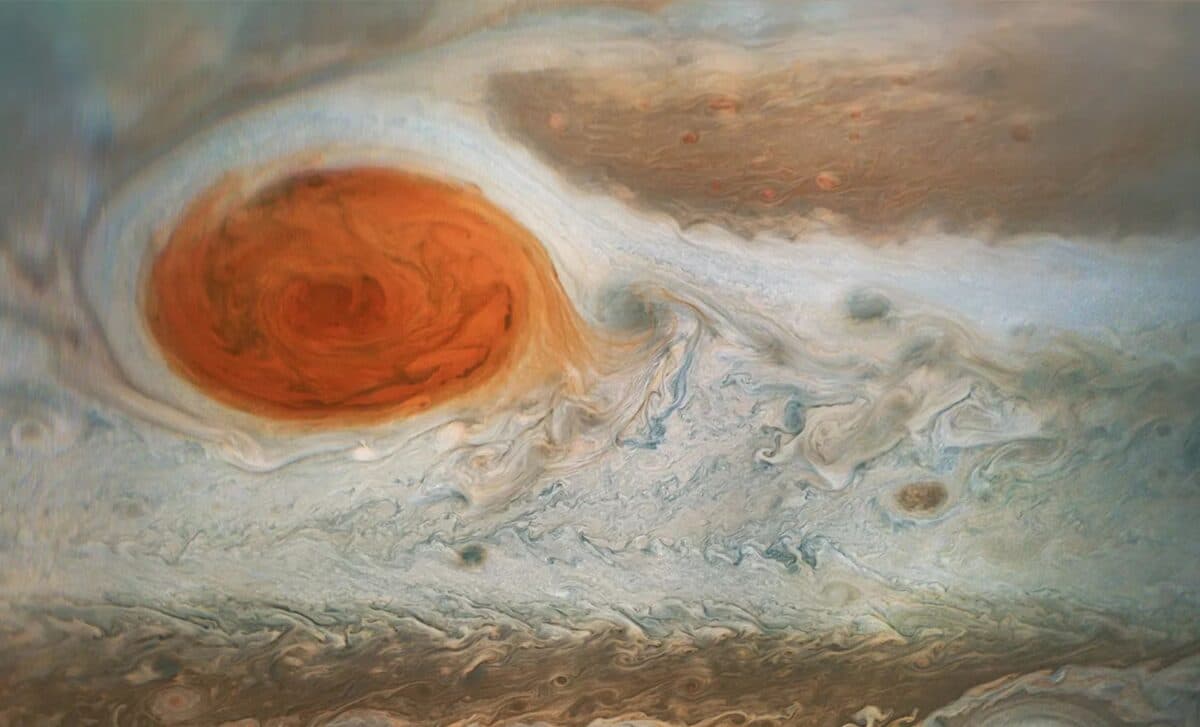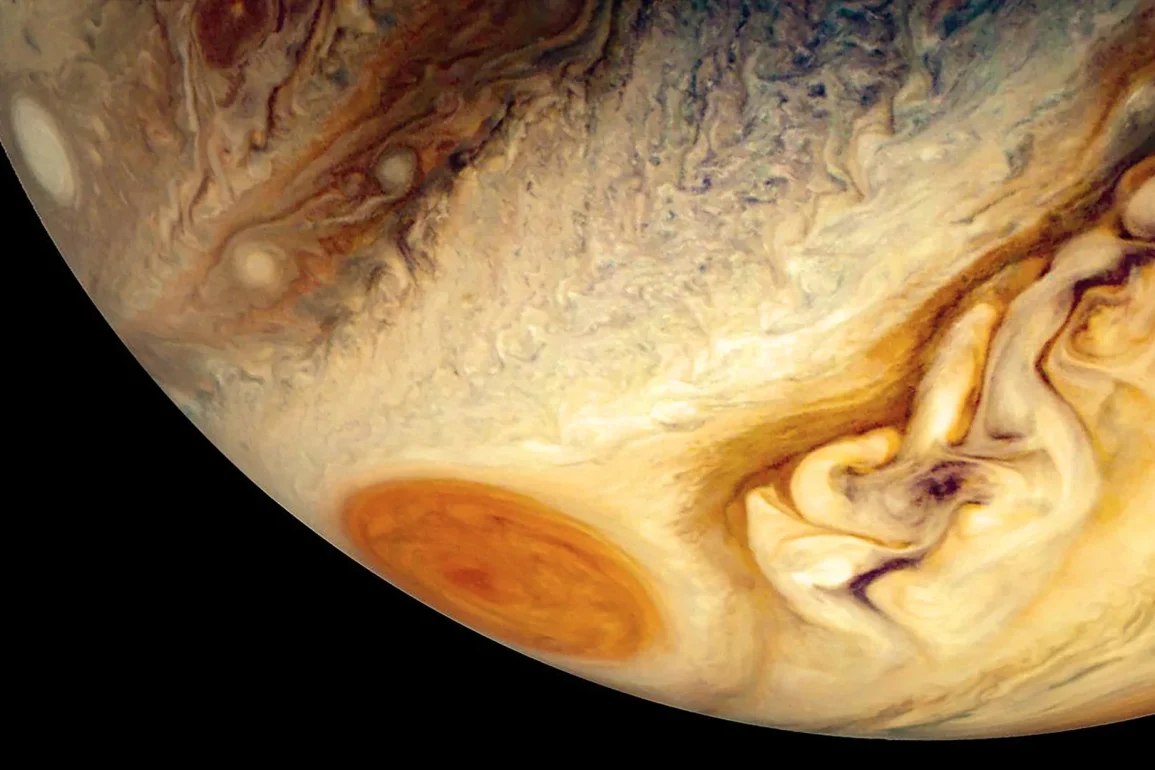Jupiter’s Great Red Spot (GRS) is an enormous storm that has fascinated astronomers for over a century, known for its striking crimson color. This massive anticyclone, often described as resembling a cycloptic eye, is situated along a southern mid-latitude cloud belt and has been active for at least 150 years.
Its size is astonishing, capable of encompassing the entire Earth, making it the largest storm in our solar system. The longevity and vastness of the GRS continue to intrigue scientists as they strive to comprehend its behavior and the forces at work within it.
To observe this remarkable storm, astronomers rely on the Hubble Space Telescope, which provides high-resolution images of the GRS. Traditionally, observations are made once a year through the Outer Planet Atmospheres Legacy (OPAL) program.
Recently, however, a new observational campaign has allowed Hubble to capture eight images over a 90-day period. This increased frequency of observation has led to new insights into the GRS’s behavior, which exhibits unexpected and dynamic changes.
Recent findings from Hubble, gathered between December 2023 and March 2024, indicate that the GRS is less stable than previously thought. The storm’s shape oscillates in a manner reminiscent of a wobbly gelatin dessert, with fluctuations in size that were not anticipated.

Scientists had expected minor variations in the storm’s longitudinal movement, but the discovery of size changes adds a new layer of complexity to understanding the GRS’s behavior, suggesting that the dynamics of Jupiter’s atmosphere are more intricate than previously believed.
The time-lapse movie created from Hubble’s observations showcases the erratic nature of the GRS over the 90-day period. As Jupiter traveled between 391 million and 512 million miles from the Sun, researchers compiled footage that illustrates how the storm compresses and expands.
This unique behavior raises questions about whether similar massive storms could exist on exoplanets, providing a broader cosmic context for meteorological phenomena beyond our own solar system.
Amy Simon, the lead researcher from NASA’s Goddard Space Flight Center, noted that the GRS demonstrates simultaneous size changes alongside its typical motion.
This dual behavior—where the storm both accelerates and decelerates while varying in size—was not previously documented. The high-resolution imaging from Hubble has provided crucial insights into the GRS, although the reasons behind this phenomenon remain unclear.
Simon’s team conducted a detailed analysis of the GRS’s color and structure, observing that the storm’s core becomes brighter at its largest size during the oscillation cycle. This brightness indicates reduced atmospheric haze absorption and highlights the complex interactions within the storm. The ability to monitor daily changes has proven essential for understanding the dynamic nature of Jupiter’s atmosphere.
The researchers aim to further explore the mechanisms driving the GRS’s unique oscillation behavior. Co-investigator Mike Wong compared the storm’s movement to a sandwich, with the surrounding jet streams acting like the bread.
The GRS has maintained its position in the southern latitude due to these jet streams, which restrict its movement. Predictions suggest that the GRS may continue to shrink before stabilizing into a less elongated form, although the specific dynamics are still under investigation.
Looking ahead, the research team hopes that future high-resolution images from Hubble will help identify additional factors influencing the oscillation of the GRS. Their findings were recently presented at the 56th annual meeting of the American Astronomical Society Division for Planetary Sciences, emphasizing the importance of ongoing study of this extraordinary storm.
The Hubble Space Telescope, a collaborative project between NASA and the European Space Agency, continues to play a vital role in enhancing our understanding of planetary atmospheres and the complex phenomena within them.

